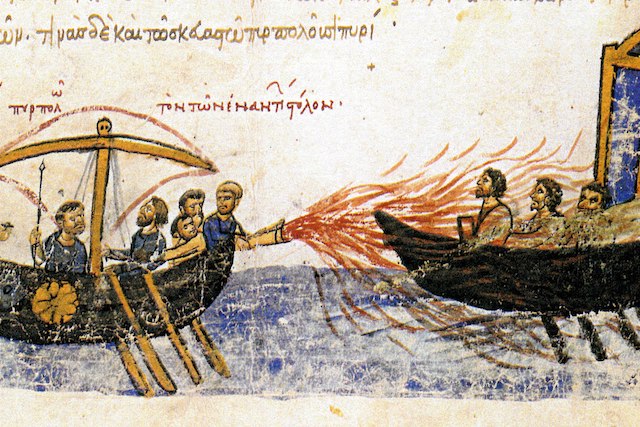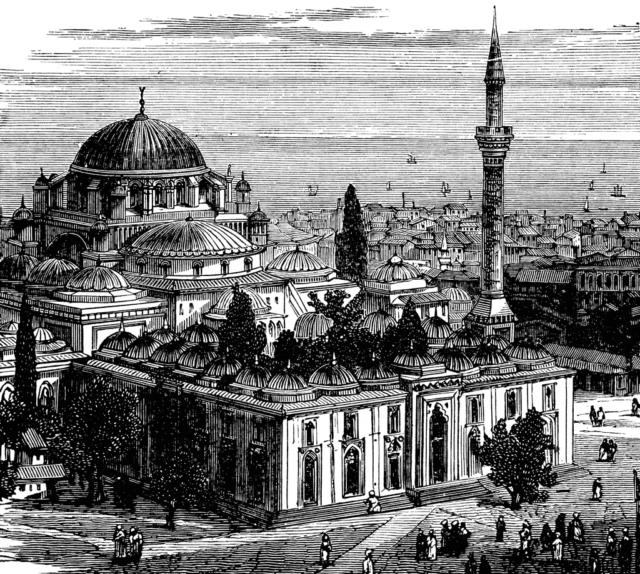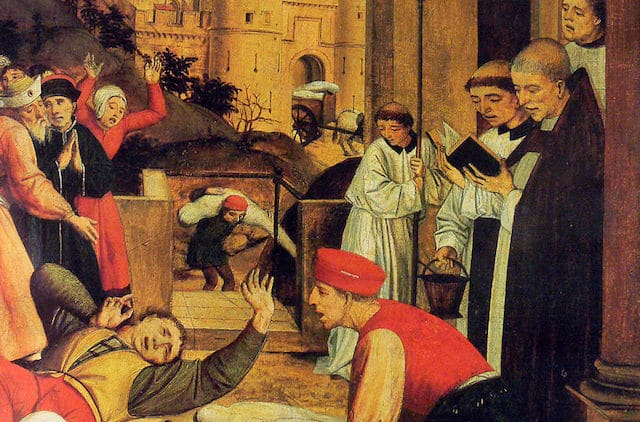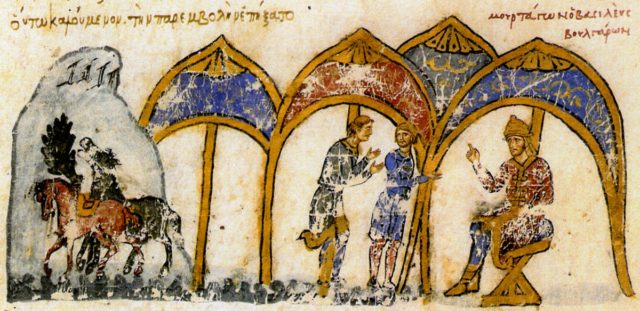Byzantine Empire Mysteries: 10 Shocking Facts Revealed
Think of the Byzantine Empire as Rome’s rebellious younger sibling – same family, but with a dramatically different personality. For over 1,000 years (330-1453 AD), this eastern powerhouse ruled from Constantinople (modern Istanbul), over 1,300 dusty miles from Rome. That’s like New York trying to run Miami from Seattle!
While keeping Roman traditions alive, the Byzantines developed some shockingly unique customs that would make their western ancestors blush. Imagine an empire where:
- Emperors could be overthrown by chariot race fans (the infamous Nika riots)
- Royal weddings sometimes featured bridal beauty contests for political matches
- The world’s first flamethrower (Greek Fire) guarded the seas
Their capital Constantinople became a glittering medieval Manhattan, with its massive domed Hagia Sophia and a marketplace where spices, silks, and secrets from three continents changed hands. Yet for all their sophistication, Byzantine politics was cutthroat – literally. Many emperors met violent ends, proving that office politics back then had very different consequences.
What makes the Byzantines fascinating isn’t just their Roman roots, but how they remixed the empire into something bold, bizarre, and utterly unpredictable. They weren’t just keeping Rome’s flame alive – they were setting history on fire with their own unique spark.
10. Unbelievable Punishments: How the Byzantines Turned Revenge into a Brutal Art Form

Ever think modern justice is harsh? Wait until you hear how the Byzantine Empire handled crime and political rivals—torture wasn’t just punishment; it was a twisted game of creativity. Forget prisons or quick executions. Back then, the goal was to humiliate, disable, and leave your enemies suffering in the most grotesque ways imaginable.
Mutilation: More Than Just Punishment
In Byzantium, cutting off body parts was the ultimate power move. Need to stop a rival from leading armies? Blind them. Want to destroy a man’s legacy? Castrate him—no heirs, no dignity, just shame. It wasn’t just about pain; it was about stripping away identity. Imagine today’s politicians settling debates not with debates, but with brutal disfigurement.
Real-Life Byzantine Nightmares
- John Athalarichos tried overthrowing his dad, Emperor Heraclius. Bad idea. His punishment? Losing his nose and hands—because why kill a traitor when you can turn him into a living warning?
- Constantine Diogenes, accused of plotting against the emperor, got blinded. The trauma drove him to suicide.
Why So Extreme?
This wasn’t just cruelty for fun. In a world where power shifted violently, disfigurement was a strategic weapon. A blind man can’t command troops. A castrated rival can’t father heirs. It was psychological warfare—permanent, visible, and utterly merciless.
Modern justice seems tame by comparison. Next time you hear about a life sentence, remember: at least nobody’s slicing off your nose.
9. Chariot Racing Was Huge

You can’t deny that people love to watch sports. According to Wikipedia, of the 24 most-watched broadcasts in world history have all been sports-related. That includes many Olympic Games broadcasts, World Cup soccer, and even two Muhammad Ali boxing matches. Both the London and the Rio Summer Games share a record of about 3.6 billion viewers. So it’s not surprising to learn that, during the Byzantine Empire, sports and competition were just as popular.
Roman-style chariot races were one of the biggest sports of the Byzantine Empire. And remember, chariot racing differed from a modern foot race or even a NASCAR race. Sure there was high speed, but the potential for death and Mayhem was extremely high. Chariot Racers could be smashed against the stone pillars or dragged to death behind their horses.
The appeal of racing for the fans seems to be the adrenaline, bloodshed, and money to be made gambling. For the racers, it was the potential for fortune and freedom. Many of these charioteers were slaves, but they had the chance to win as much as 15 bags of gold for winning a single race.
The most famous charioteer in history was Diocles, and it is said that he earned 36 million sesterces over his career, which could have fed the entire city of Rome for a year. For some context, a Roman soldier might have earned about 1,200 sesterces in a year.
There were four teams in Byzantine Chariot racing, the Whites, the Greens, the Blues, and the Reds. Eventually, these teams merged and became just the Greens and the Blues. And fans were so passionate about the sport and that when they weren’t throwing nail-studded tablets under the track to sabotage their opponents, they were breaking into bloody riots to support their own team. At one point the Greens ambushed the Blues and killed 3,000 of them.
8. Greek Fire: The Byzantine Empire’s Terrifying “Dragon Breath” Weapon

Ever watched Game of Thrones and thought Wildfire was pure fantasy? Think again. The Byzantines had their own real-life version—Greek Fire, a sticky, water-proof inferno that could turn ships into floating bonfires. Imagine a 7th-century flamethrower spraying liquid doom—now that’s ancient warfare at its most brutal.
Napalm of the Middle Ages
Historians believe this alchemical nightmare fuel was invented around the 7th century, possibly by a Jewish refugee named Callinicus. The recipe? Top-secret. The delivery? Pure terror. It could be launched from tubes like an ancient flamethrower or hurled in clay pots—sticking to targets and burning even on water. (Try dumping a bucket on that blaze. Spoiler: It won’t help.)
The Ultimate Naval Weapon
Greek Fire’s legendary debut came in the 670s, when Constantinople faced an Arab fleet invasion. Picture this: Enemy ships approach, and suddenly—BOOM—jets of fire engulf them. Panic. Chaos. A smoking, sinking graveyard on the waves. No wonder the Byzantines dominated naval battles for centuries.
Why Did It Vanish?
By the 15th century, Greek Fire disappeared—likely because the secret recipe died with its keepers. Modern guesses? A mix of petroleum, sulfur, and quicklime, but no one’s sure. The Byzantines guarded their WMD-level weapon so well, its exact formula remains one of history’s great mysteries.
Fantasy Meets Reality
So next time you see Wildfire in Game of Thrones, remember: Greek Fire was real—and somehow scarier. The Byzantines didn’t just wield fire; they weaponized pure, unquenchable dread.
7. They Created Their Own Silk Industry

Before the 6th century, if you were interested in getting anything made of silk in the world, you were going to China to get it. It’s hard to conceptualize just how important and valuable silk was back in the day by today’s standards but the fact that the major trade road across the world was known as The Silk Road ought to give you some sign of how highly prized this commodity was.
Keeping the Silk Road open was a constant struggle, especially since it traveled through Persia and Persia would not allow trade during times of War. In the 6th century, the Byzantine emperor Justinian became frustrated with the inconsistent silk trade and came up with a solution.
Under instructions from Emperor Justinian, two monks went to China and nabbed some silkworm eggs, which they smuggled back to the Empire hidden in their canes. Before the monks went to China, no one even knew really where silk came from. The Byzantines thought it came from India. The entire journey took the monks two years. And it also paid off.
They started silk factories in Constantinople and other cities throughout the empire. They toppled the Chinese and Persian silk monopolies, and the Byzantine Empire started their own across Europe. This was a cornerstone of the entire Byzantine economy for well over half a millennium. They still produce silk throughout Turkey and Greece today.
6. The Nika Riots

As big a deal as chariot races were in Byzantium, you can’t really get an appreciation for how seriously people took them without talking about the Nika riots. The riots took place for a solid week of the year 532 AD. In modern times we’ve seen riots on television and the potential chaos that ensues when common people clash with law enforcement or groups of others with opposing viewpoints, nothing in modern history comes close to what went down to release riots. or, to put it another way, 30,000 people died, and they burned half the city to the ground in that one week.
By the time they had separated the Chariot teams into two groups, the Greens and the Blues, loyalty to one faction or another was seriously scary stuff. The Emperor would often choose a side not because he particularly supported one came over the other, but to ensure that one team supported him so that both couldn’t join together and overthrow the empire.
Unfortunately for Emperor Justinian, he didn’t feel the need to support one faction over the other. He was trying to eliminate partisan politics from how society worked, but the general population didn’t see it that way. Along with some civil unrest because of his unpopular policies and war in Persia, everything blended together to create a state of chaos.
Members of the Blues and Greens plead with Justinian at a race to have mercy on some of their teammates, who were set to be executed for a previous riot. Justinian declined, and the crowd shouted ‘Nika,’ which meant victory and was chanted typically at charioteers. The fuse was lit, and the riot began.
Rioters released all the prisoners from a local jail and began burning down the city. They trapped Justinian inside of his palace and both factions teamed together to declare a new emperor. It was only through the clever machinations of three of Justinian’s generals, all of whom were barbarians and had no loyalty to either faction, that they were able to sow discord between the Greens and Blues and slaughter anyone who dissented.
Ten percent of the City’s population was thought to have been killed by the time the riot was over and the would-be Emperor propped up by the Blues on the Greens was killed for his trouble.
5. Adulterers Lost Their Noses

The Byzantine Empire wasn’t just a battleground for emperors and power struggles—it was also a place where your personal life could land you in serious trouble. Under the reign of Emperor Leo III, a sweeping legal reform didn’t just target criminals; it also cracked down on morality and personal relationships with penalties that were as harsh as they were bizarre.
For instance, a married man caught committing adultery wasn’t just in for a scolding—he was sentenced to 12 lashes and had to cough up a hefty fine. If you were unmarried but found guilty of fornication, you weren’t off the hook either—six lashes awaited you. But these punishments were mild compared to what happened if you crossed certain lines.
One of the most gruesome penalties was reserved for those who dared to engage in relations with a nun—such an offense would result in having their nose cut off. And if a husband knew about his wife’s infidelity but chose to turn a blind eye? He wouldn’t escape either—he’d be flogged and exiled. Meanwhile, the unfaithful wife and her lover weren’t just shamed or fined—they were subjected to the same brutal facial mutilation.
These laws, designed to uphold morality, might seem unbelievably extreme by today’s standards, but in the Byzantine world, they were considered necessary to maintain order. This era’s legal system was a blend of strict religious doctrine and imperial authority, ensuring that no one—whether noble or commoner—could defy the emperor’s vision of morality without facing terrifying consequences.
4. The Justinian Plague

Anyone who made it through 2020’s pandemic knows how life can turn upside down when disease spreads uncontrollably. But imagine facing a global plague without modern medicine, technology, or even the faintest idea of how germs worked. That was the grim reality between 541 and 542 AD, when the Justinian Plague struck, bringing chaos and death in its wake.
Though the bubonic plague would later decimate Europe in the 14th century, killing nearly 50 million people, its first major recorded devastation happened under Emperor Justinian I. The disease, carried by rats and fleas, traveled along bustling trade routes, infiltrating cities as people unknowingly spread it while fleeing harsh winters. By the time it reached Constantinople in 542, it unleashed sheer horror—bodies piled up in the streets, graveyards overflowed, and mass burials became the norm. In some cases, corpses were even dumped into the sea or stored in abandoned buildings simply because there was nowhere else to put them.
The famed historian Procopius, who chronicled the empire’s misfortunes, blamed Justinian for the catastrophe, even suggesting the emperor might be a devil in disguise or suffering divine punishment. Ironically, Justinian contracted the plague himself but miraculously survived—unlike the estimated 25 to 50 million people who perished across the empire.
With doctors either overwhelmed or dead, the desperate turned to cold baths, charms, and prayers, hoping for a cure. In Constantinople alone, the death toll soared to between 5,000 and 10,000 people per day at its peak. Over four brutal months, the city became an eerie, silent graveyard—its streets haunted by the ghosts of an empire struggling to hold on.
3. Bagpipes: Scotland’s Iconic Instrument… or a Byzantine (or Persian) Invention?

When you think of Scotland, what comes to mind? Loch Ness, haggis, and of course, the skirl of bagpipes—that unmistakable sound echoing across misty highlands. But here’s the twist: bagpipes might not be Scottish at all. Surprised? Historians trace their origins to somewhere far older—and far more unexpected.
Byzantine Bagpipes? A Musical Mystery
While bagpipes scream “Scotland” today, evidence suggests they existed centuries earlier in the Byzantine Empire. Imagine Byzantine soldiers or shepherds pumping air into a leather bag, fingers dancing over chanters—long before kilts were even a concept. But the story gets even wilder.
Persia: The True Birthplace?
According to Oxford’s Centre for Byzantine Research, the bagpipe’s roots may stretch even further back—to ancient Persia. Why? Shepherds. For millennia, Persian herders used simple wind instruments to pass lonely hours in the hills. Over time, these evolved into early bagpipes, spreading across empires like musical wildfire.
Fun fact: The lute and guitar also originated in the Middle East. Turns out, medieval Europe’s greatest hits had ancient Eastern roots.
How Did Bagpipes Become “Scottish”?
Trade, war, and cultural exchange likely brought bagpipes to Europe. But in Scotland’s rugged terrain, they found a perfect home. By the 15th century, clans adopted them for battle signals and ceremonies—cementing their place in Scottish identity.
Lost in Translation
So why don’t we associate bagpipes with Persian poets or Byzantine armies? History’s funny that way. Great inventions often shed their origins, becoming symbols of entirely different cultures. (Looking at you, “French” fries.)
Next time you hear bagpipes, remember: That haunting wail has crossed deserts, empires, and centuries—long before it ever reached the Highlands.
2. The First New England Was There

When people mention New England today, they’re usually referring to the Northeastern United States—places like Massachusetts, Connecticut, and Rhode Island. But long before the Pilgrims set foot on American soil, there was another New England, one that existed deep in the Byzantine Empire.
In 1075, over 4,000 English immigrants—many of them war refugees—journeyed to the Byzantine world, fleeing the turmoil of the Norman Conquest of 1066. Seeking a new home, they established a settlement called Nova Anglia, Latin for New England. Though its exact location remains a historical mystery, we do know that many of these Englishmen found their way into the Byzantine military, joining the elite ranks of mercenary soldiers alongside Scandinavians.
At the time, the Byzantines and Normans were bitter enemies, which gave these displaced Englishmen the perfect opportunity for revenge. Having lost their homeland to the Normans, they now fought under the Byzantine banner, wielding their swords against their former conquerors.
While Constantinople became a new base for many English warriors, the precise location of Byzantium’s New England has been lost to history. What remains is a fascinating tale of exile, war, and a forgotten chapter where Englishmen carved out a new existence—not in America, but in the heart of the Eastern Roman Empire.
1. The Cannon That Shattered an Empire: How One Mega-Weapon Doomed Constantinople

For 1,000 years, Constantinople’s legendary walls stood unbroken. 23 sieges had failed against its massive defenses—until 1453, when a 27-foot-long monster of bronze changed history. This wasn’t just a cannon. It was Sultan Mehmed II’s ultimate siege weapon, designed to do what no army could: pulverize the impenetrable.
Engineering a Colossus
Picture a cannon so huge a grown man could crawl inside its barrel. With walls 8 inches thick and firing half-ton stone balls, this beast required:
- 200 men straining at ropes
- 60 oxen groaning under the load
- 140 miles of painstaking transport (at 2.5 miles per day!)
The Walls Meet Their Match
For centuries, Constantinople’s defenses laughed off attacks. But Mehmed’s cannon didn’t just chip the walls—it vaporized sections. Each of its 7 daily shots (slow by modern standards) struck like earthquakes, collapsing towers and morale alike. The psychological terror was as devastating as the physical damage.
Why This Cannon Changed Warfare
Previous sieges relied on starvation or treachery. This was different: raw, industrialized destruction on an unprecedented scale. When the dust settled:
- The Byzantine Empire, already crumbling, lost its heart.
- Medieval warfare entered the age of gunpowder dominance.
- A 30-inch barrel proved mightier than a millennium of engineering.
Legacy of a Bronze Behemoth
The cannon’s success wasn’t just in breaking walls—it broke an era. Stone fortresses suddenly looked obsolete. And Constantinople? After standing since 330 AD, it fell in weeks. All because one sultan dreamed impossibly big.
























